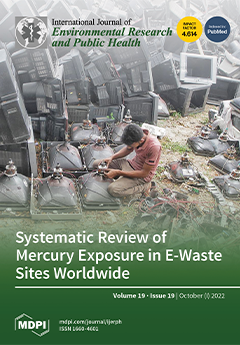Water resources are a major factor in the spatial layout of agricultural production and urban construction, which is an important part of China’s ongoing territorial spatial planning. In order to assess the constraining and guiding effects of water resources on territorial spatial planning,
[...] Read more.
Water resources are a major factor in the spatial layout of agricultural production and urban construction, which is an important part of China’s ongoing territorial spatial planning. In order to assess the constraining and guiding effects of water resources on territorial spatial planning, water resources suitability evaluation needs to be carried out at the grid scale. Traditional basin or regional-scale indicators of water resources cannot satisfy the requirements with high spatial accuracy in territorial spatial planning, because the internal differences could not be described. In this study, irrigation water supply cost index (CIA) and urban water supply cost index (CIU) were evaluated to characterize the affordability of potential water supply costs by simulating of optimal water supply path. Further, grid-scale indexes of water resource suitability for agricultural production (WRSA) and for urban construction (WRSU) were constructed. The grades of WRSA and WRSU were classified at a 20 m grid scale in Baiyin City. The areas of water resources that were suitable, relatively suitable, less suitable, and unsuitable for agricultural production were 381.0 km
2, 3354.7 km
2, 3663.9 km
2, and 12,700.7 km
2, respectively, accounting for 1.9%, 16.7%, 18.2%, and 63.2% of the total area of Baiyin City. The areas of water resources that were suitable, relatively suitable, less suitable, and unsuitable for urban construction were 1657.7 km
2, 4184.5 km
2, 1177.7 km
2, and 13,075.7 km
2, respectively, accounting for 8.2%, 20.8%, 5.9%, and 65.1% of the total area of Baiyin City. Coupling analysis with land use and land resources suitability were carried out in this study, which showed that the grid-scale WRSA and WRSU could well characterize the spatial differences of water resources suitability for agricultural production and urban construction. The results of the Geodetector-based study show that the WRSA and WRSU indicators have better explanatory power for the land-use spatial distribution compared to indicators such as water distance. Therefore, the indexes could provide scientific support to delimit agricultural space and urban space, and are effective means of “determining regional functions by water resources“ in territorial spatial planning. Furthermore, the indexes could be applied to other arid and semi-arid areas, and also hilly areas, where water supply suitability plays a restrictive role in agricultural production and urban construction.
Full article





